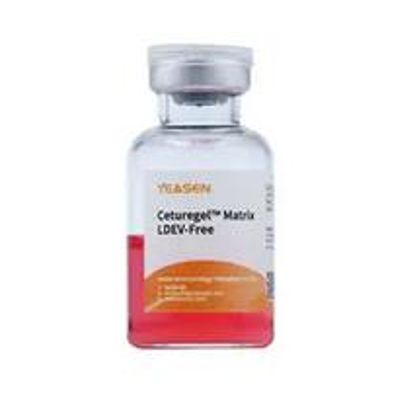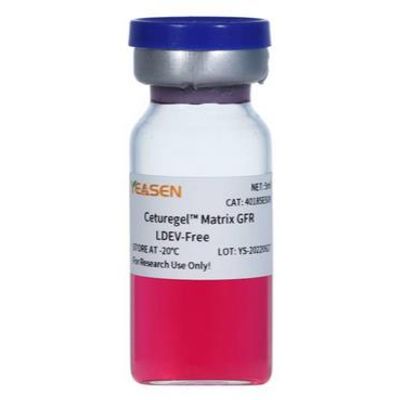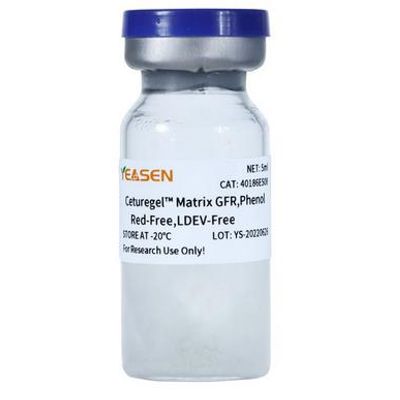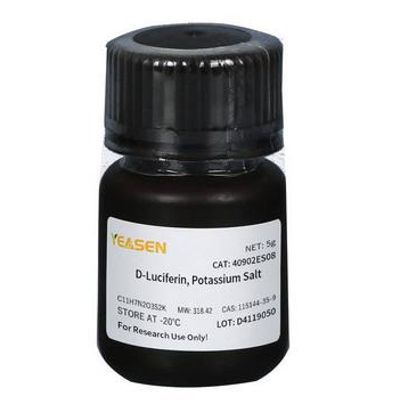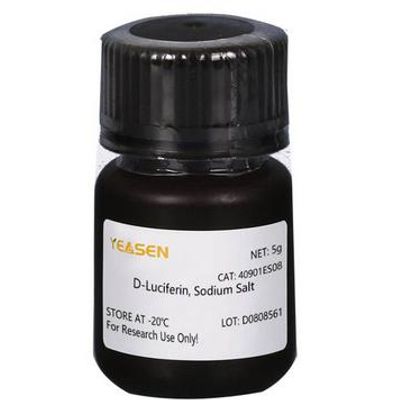

Yeasen Biotechnology (Shanghai) Co.,Ltd. products
Biopharma - Drug Discovery & Development
Ceturegel - Basement Membrane Matrix
Ceturegel Matrix is a soluble basement membrane preparation extracted from EHS mouse tumors rich in extracellular matrix proteins. Its main components are laminin, type IV collagen, heparan sulfate proteoglycan (HSPG), nestin as well as growth factors such as TGF-beta, EGF, IGF, FGF, tissue plasminogen activator, and other growth factors contained in EHS tumors. Yeasen provides diverse kinds of Ceturegel matrix based on different applications, such as cell morphology, biochemical function, migration, Invasion, and gene expression studies. Ceturegel Matrix LDEV-Free provided by Yeasen is suitable for 2D or 3D culture, in vivo tumorigenesis, and invasion and migration experiments.
Ceturegel - Basement Membrane Matrix
Ceturegel matrix, a kind of basement membrane matrix, is a soluble basement membrane preparation extracted from EHS mouse tumors rich in extracellular matrix proteins. It also contains growth factors such as TGF-beta, EGF, IGF, FGF and other related factors. Ceturegel™ Matrix GFR, LDEV-Free is a low growth factor matrigel obtained after special treatment, which can effectively ensure the needs of some experimental operations that require low growth factors, such as experiments related to signaling pathways and growth factors.
Ceturegel - Basement Membrane Matrix
Ceturegel basement membrane matrix is a soluble basement membrane preparation extracted from EHS mouse tumors rich in extracellular matrix proteins. Ceturegel™ GFR (Phenol Red-Free&LDEV-Free) is a low growth factor matrix obtained after special treatment, which can effectively ensure the needs of some experimental operations that require low growth factors, such as experiments related to signaling pathways and growth factors.
Cell Culture & Analysis - Animal Model Construction
Yeasen - D-Luciferin, Potassium Salt
D-luciferin is a common substrate for Luciferase and is widely used throughout biotechnology, especially in vivo imaging Technology. The mechanism of action is that luciferin (substrate) can be oxidized to emit light in the presence of ATP and luciferase. When fluorescein is in excess, the quantum number of light produced is equal to Luciferase concentrations were positively correlated (see figure below). Plasmids carrying luciferase encoding gene (Luc) were transfected into cells and introduced into study animals such as rats and mice.
Yeasen - D-Luciferin, Sodium Salt
D-luciferin is a common substrate for Luciferase and is widely used throughout biotechnology, especially in vivo imaging technology. The mechanism of action is that luciferin (the substrate) is oxidized to emit light in response to ATP and luciferase (see figure below). It`s produced when there`s too much luciferin The light quantum number was positively correlated with the concentration of luciferase. Plasmids carrying luciferase encoding gene (Luc) were transfected into cells and introduced into study animals such as rats and mice In vivo, fluorescein is then injected and changes in light intensity are detected using bioluminescence imaging (BLI) to monitor disease progression or drug efficacy in real time and so on. ATP`s influence on the reaction system can also be used to indicate energy or vital signs according to changes in bioluminescence intensity.

